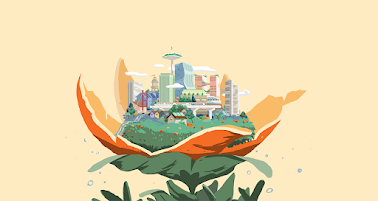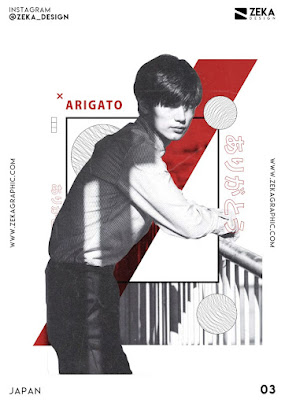Design Principles - TASK 2 (Visual Analysis)
28/2/2024- 6/3/2024 ( Week 4 -Week 5)
Alyssa Lim Shyn Yi (0365877) Class 01 Sec 03
Design Principles GCD60804
Bachelor of Design (Honours) in Creative Media / Taylor's University
TASK 2 (Visual Analysis)
TABLE OF CONTENT
1. Instructions
2. Lecture
4. Feedback
5. Reflection
INSTRUCTIONS
<iframe src="https://drive.google.com/file/d/16rZHsRz7NqNkc2ih6tvbbY9ufftqBLlq/preview" width="640" height="480" allow="autoplay"></iframe>
1. Recap Task 2 brief.
2. Write a 300 to 350 word visual analysis of the selected design.
3. Include reference links where applicable.
LECTURE
- Method of understanding design that focuses on the visual elements & principles
- In its strictest definition - description & explanation of visual structure for its own sake
- Recognize the choices that a designer made in creating the design
- A skill that helps people read & critically interpret images
- Means closely looking at & identifying the visual elements of a design
- Do not read beforehand about the design at all
- About looking, thinking, and finding good language
- Think about your observations
- Combine to create design principles that complete that work of design/art
- Fused with facts about the design work
Task 2 (Visual Analysis)
Phase 1: Observation (107 words)
Based on the design work above, it is in portrait mode. There are hands in the air with strings controlling the buildings. Hence, this symbolizes the strong link between human creativity and resilient infrastructure. It shows buildings decorated with outstretched hands, emphasizing the vital part that human inventiveness plays in forming our environment. The hands entwined with architectural features represents a happy coexistence between people and the buildings we construct. As for the visual element, the main colors used here are purple and peach along with some grey as the shadows on the hands. Overall, it is a retro design with a touch of playfulness in it.
Phase 2: Analysis (113 words)
Using the Rule of Thirds, the artist creates a symmetrical balance in this piece of art, emphasizing hands over buildings to represent the creative source of industry, innovation, and infrastructure. In order to create a visually appealing arrangement, proportion is used, which supports the notion of human and architectural cooperation. A sensation of movement is created when outstretched hands line up with architectural elements, directing visual flow and highlighting collaboration in sustainable construction. The hands played as a figurative symbol and therefore give the artwork more depth and provoke spectators to consider the close relationship between people and the construction of durable infrastructure by acting as metaphorical representations of human inventiveness and cooperation.
Phase 3: Interpretation (114 words)
The poster is designed with a unique retro style and muted color palette. The skillful incorporation of texture and half-tone patterns evokes a nostalgic feel, transporting viewers back a few decades while maintaining a playful touch. The designer had demonstrated his adaptability by creating style books and redesigning brands. These are the artwork that I've found similar online relating to Goal 9 in UNSDG. Both posters are being designed in a playful way as you can see the artists make use of negative space to balance the composition. (Figure 1.0, Source, 2019) The artists also make great choice of vibrant colors making it look brighter and cheerful. Hence, these artworks have evoke a sense of joy and amusement.(Figure 1.1, Source, 2019).
Total word count: 334 words
References:
1. Figure 1.0. Industry, innovation and infrastructure (no date) Christine Le Achewie Art. Available at: https://achewie.com/industry-innovation-and-infrastructure (Accessed: 06 March 2024).
2. Figure 1.1. Yuchen Zhang (2019) Girlsclub Asia. Available at: https://girlsclub.asia/meet-the-artist/yuchen-zhang/ (Accessed: 06 March 2024).
FEEDBACK
WEEK 4
General Feedback: No feedback given as I was on the school's trip to Japan.
Specific Feedback: N/A
WEEK 5
General Feedback: Overall is good
Specific Feedback: Bold the design principles, put reference in the article
REFLECTION
Throughout the process of doing this work, I am glad that I had a better understanding about the observation, analysis and interpretation of the artwork I've chosen. I was able to learn more about the importance of using design principles in our artwork and how it could affect our work. Moreover, I had learn that artists used designs to express their idea, feelings or even used them to communicate with audiences visually. Thanks to this task, I am now able to proceed my task 3 smoothly.
FURTHER READING
For this week's further reading, I had chosen an article founded on PluralSight. The title of the article was " Understanding the Importance of Balance in Graphic Design ", posted on 26th January 2023.
The following article discussed about how balance worked among elements in different kinds of design to create coherence, fulfillment, and contentment. Balance had been playing a important principle in the design industry. Without the sense of balance, the audiences' eyes would not able to identify what element they should looked at first. In order to achieve balance in our outcome includes colors, textures, space, objects and still versus moving. Apart from that, proper visual balance should also being considered in distribution and manipulation of other design elements. For example, if you place a light color text next to a dark color, the light element would naturally felt heavier in the design.
QUICK LINKS




.png)
.png)
Comments
Post a Comment